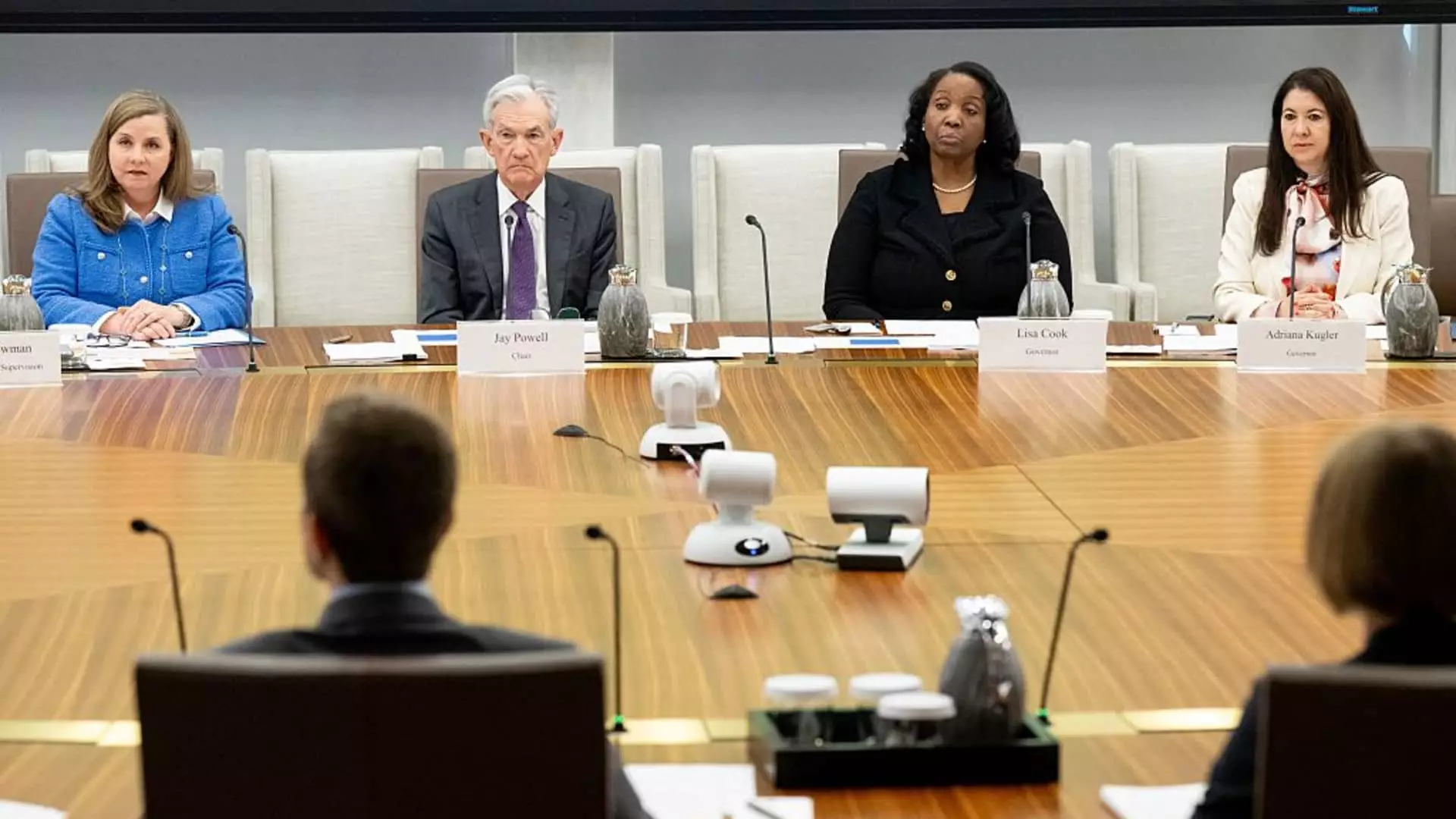In a bold maneuver that might strike those invested in fiscal stability as reckless, the Federal Reserve has proposed a significant easing of the enhanced supplementary leverage ratio (eSLR). This regulation, constructed painstakingly after the 2008 financial crisis, was intended to ensure banks maintain a sufficient capital buffer to weather inevitable market turmoil. However, faced with the dual pressures of bolstering bank liquidity and responding to Wall Street’s lobbying efforts, the Fed finds itself inching away from the protective measures that it once championed.
The proposition to reduce the top-tier capital requirement for large financial institutions by approximately 1.4%—a relaxing that amounts to about $13 billion for holding companies—leaves much to be desired. Advocates like Vice Chair for Supervision Michelle Bowman claim it will foster resilience within the Treasury markets, yet the implications of such a pivot raise serious questions about the prudent governance of our financial system.
The Push for Looser Regulations
The crux of the argument for decreasing capital requirements rests on the assertion that banks are now sitting on an abundance of safer assets, specifically U.S. Treasury bonds. Fed Chairman Jerome Powell’s statement reflects this rationale, championing the notion that the environment has shifted significantly since the eSLR was introduced. Nevertheless, this reasoning seems to gloss over the fundamental purpose of the original regulations—namely, safeguarding against the greed and recklessness that led to previous crises.
By aligning the treatment of Treasurys with that of higher-yield, riskier assets, the Fed—or rather, its proponents—argue this will create room for banks to operate more freely. However, legalizing the conflation of low-risk with high-risk assets feels akin to inviting a wolf into a fold of sheep while touting its docility. It is this naivety, disguised as strategic progress, that could leave our economy vulnerable to similar shocks that precipitated the last financial debacle.
Voices of Dissent
While some Fed officials, including Bowman and Governor Christopher Waller, extoll the virtues of the proposed changes, it is crucial to recognize the dissenting voices within the board. Governors Adriana Kugler and Michael Barr provide a cautionary note regarding the potential pitfalls of relaxing capital requirements. Their warnings indicate that the loosening of these standards may attract banks to prioritize shareholder returns over prudent lending practices. The concern is not unfounded: history has taught us that quick-fix solutions often end in more significant disruptions.
Barr’s assertion that this easing is unlikely to enhance Treasury market intermediation during stress serves as a stark reminder of the precarious balance that regulators must uphold. One cannot help but wonder whether the Fed is willing to gamble on the high stakes of the financial world, particularly when the consequences of miscalculation could reverberate through the economy.
The Illusion of Stability
As the proposal opens up a 60-day public comment window, it beckons a critical examination of assumptions currently framing bank regulation. The simplistic notion that less stringent capital requirements automatically translate into greater financial fluidity is, at best, dangerously optimistic. Banks, by nature, are designed to maximize profits, and making capital less of a safety net only paves the way for reckless behavior.
Consider what lies at the heart of economic stability: trust. The financial system thrives on the belief that risks are managed appropriately. Undermining the safeguards established post-crisis will not only challenge this trust but may set a precedent that defies the hard-earned lessons learned from the bruising financial scars of our recent past.
In a landscape already grappling with volatility influenced by global economic shifts and policy changes, cautiously maintaining a level of rigor in banking regulations is not merely prudent but necessary. To suggest otherwise is to flirt dangerously with disaster, and we owe it to the citizens and the economy at large not to potentially sacrifice what we have painstakingly rebuilt. The question remains whether the Federal Reserve can maintain this balance without succumbing to Wall Street’s shortsighted demands.

Leave a Reply